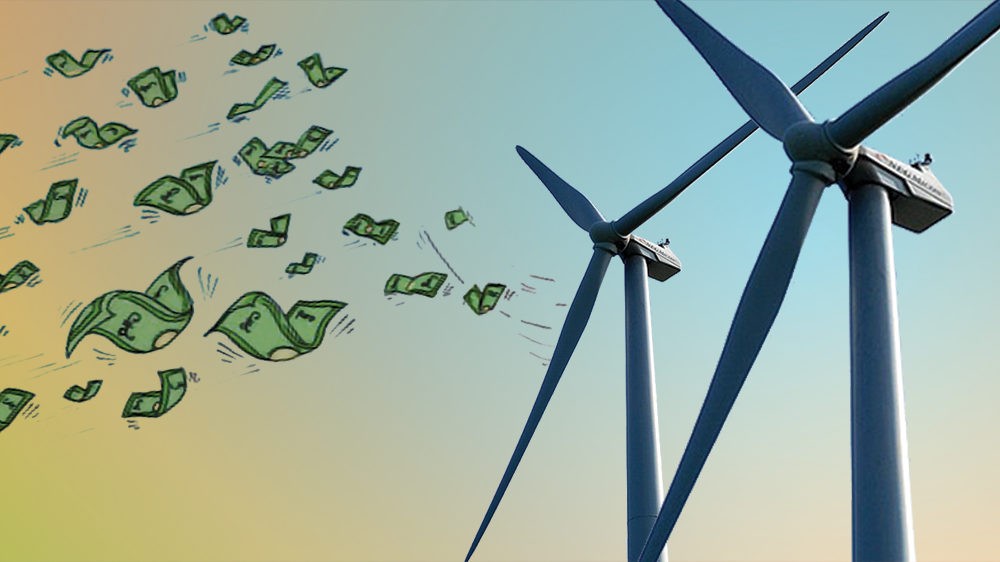The answer is blowing in the wind, is it?
By EPR Magazine Editorial November 27, 2017 6:25 pm IST
By EPR Magazine Editorial November 27, 2017 6:25 pm IST

India, the 4th largest carbon emitter in the world, ratified the Paris Agreement for Climatic Change in October, 2016 and committed to achieve the world’s largest renewable capacity expansion programme. India aims to achieve 175 GW renewable energy capacity by 2022. A significant role is expected to be played by the wind sector with a target of 60 GW wind power installed capacity by 2022. Globally, our wind capacity installations are 4th largest after China, USA and Germany. We have 9 wind-rich states i.e. Tamil Nadu, Maharashtra, Gujarat, Rajasthan, Karnataka, Madhya Pradesh, Andhra Pradesh, Telangana and Kerala.
Spurred by the Paris Agreement, a range of fiscal and policy incentives have been offered by the Government which support additional investments in the wind sector. An obvious question begging an answer is-why in spite of these fiscal and policy incentives, investments in the wind sector are on a declining trend?
On a global level, in 2015, developing countries (including India) accounted for more than half of the global investment in both wind and solar power. However, the year 2016 witnessed stagnated growth in investments in the wind power sector while maintaining steady levels of investment in solar power. Investments in wind power witnessed 13 per cent growth to USD 60.6 billion in developed countries but decreased by 27 per cent to USD 51.9 billion in developing countries. On a global level, the decrease in investments is primarily attributed to increasing economies of scale, improvements in technology and significant cost reductions. However, in case of India, there’s more than what meets the eye.
The growth of wind power sector in India is facing major challenges, some being:
RPO related issues
Disconnect between allotted capacity under the State Government Policy which specifies targeted installation in a particular year and RPO targets under the State Commission’s regulations, inevitably leads to stagnation of capacity. Further, as per the Report of the Comptroller and Auditor General of India on Renewable Energy Sector in India, only six states, namely, Arunachal Pradesh, Himachal Pradesh, Karnataka, Meghalaya, Mizoram and Tamil Nadu had been able to achieve the RPO targets as fixed by the respective State Commissions. Lack of penalties for non-compliance or non-enforcement of the penalty mechanism are contributory factors to the repeated violations.
Regulatory uncertainty
Absence of an unambiguous regulatory framework leads to regulatory uncertainty. Viewed from an investor’s angle, the deterrent effect cannot be ignored. As on date, most renewable energy generators are intra-state players. While all the progress has been made at inter-state level, in absence of regulatory framework at intra-state level, there is uncertainty in operational methodologies. This lack of uniform regulatory framework is specially felt in the area of scheduling and forecasting.
Wilful backing down during high wind season
As per law, wind power plants are “must-run” stations and are not subjected to Merit Order Despatch. “Must run” status implies that all power generated by the renewable energy project must necessarily be evacuated except in case of grid exigencies. Backing down of wind generation is a common phenomenon these days even when grid security is not at risk. The Indian Electricity Grid Code Regulations specifically recognize renewable energy generator as ‘must run plants’. However, some State Regulations are yet to follow the stipulation under the Indian Electricity Grid Code Regulations. To worsen the situation, under the guise of grid security, instructions are conveyed over the telephone and not even properly recorded in the SLDC log-books. In such a scenario, operational certainty is severely jeopardised.
Poor financial health of the Discoms
With increasing regulatory assets every year, the Discoms prefer off-taking the cheaper thermal power vis-à-vis wind power. Poor financial health of the Discoms also leads to in-ordinate delays in signing of the PPA, agitation for re-opening of the PPA and matching FiT with bidding tariff, delay in payments and other breaches under the PPA. To further worsen the situation, many a times it has been seen that the State Regulators are oblivious to such incidents of non-payments and other breaches under the PPA and hesitate to pass strict orders.
Delay in disbursement of incentives
There are delays in release of GBI amounts to the developers due to non-availability of funds from MNRE. Keeping in view the above, a new scheme has been introduced by IREDA for providing loan against discounting of pending GBI claims. Some developers, who have not signed up for the new scheme, face challenges and inordinate delays in disbursement.
Conclusion
Electricity is a concurrent subject and both central and state governments are empowered to legislate over it. Though various promotional measures and policies are being issued by the MNRE, yet, their implementations at the state-level have not been assured. In order to achieve the ambitious target of 60MW of installed wind power capacity by 2022, it is imperative to put in place a sound regulatory framework. While incentivising fresh investments is necessary, the need to sustain the already installed capacity cannot be ignored. Unless current issues are resolved, attracting fresh investments would be an uphill task. While innumerable challenges and questions arise, the answers or solutions to the problems are yet to be discerned. In view of the above-stated ground realities faced by the wind sector, one is compelled to question if “the answer is blowing in the wind”?
Authored by:
Apoorva Misra (Partner) and Puja Priyadarshini (Senior Associate) at J Sagar Associates
We use cookies to personalize your experience. By continuing to visit this website you agree to our Terms & Conditions, Privacy Policy and Cookie Policy.